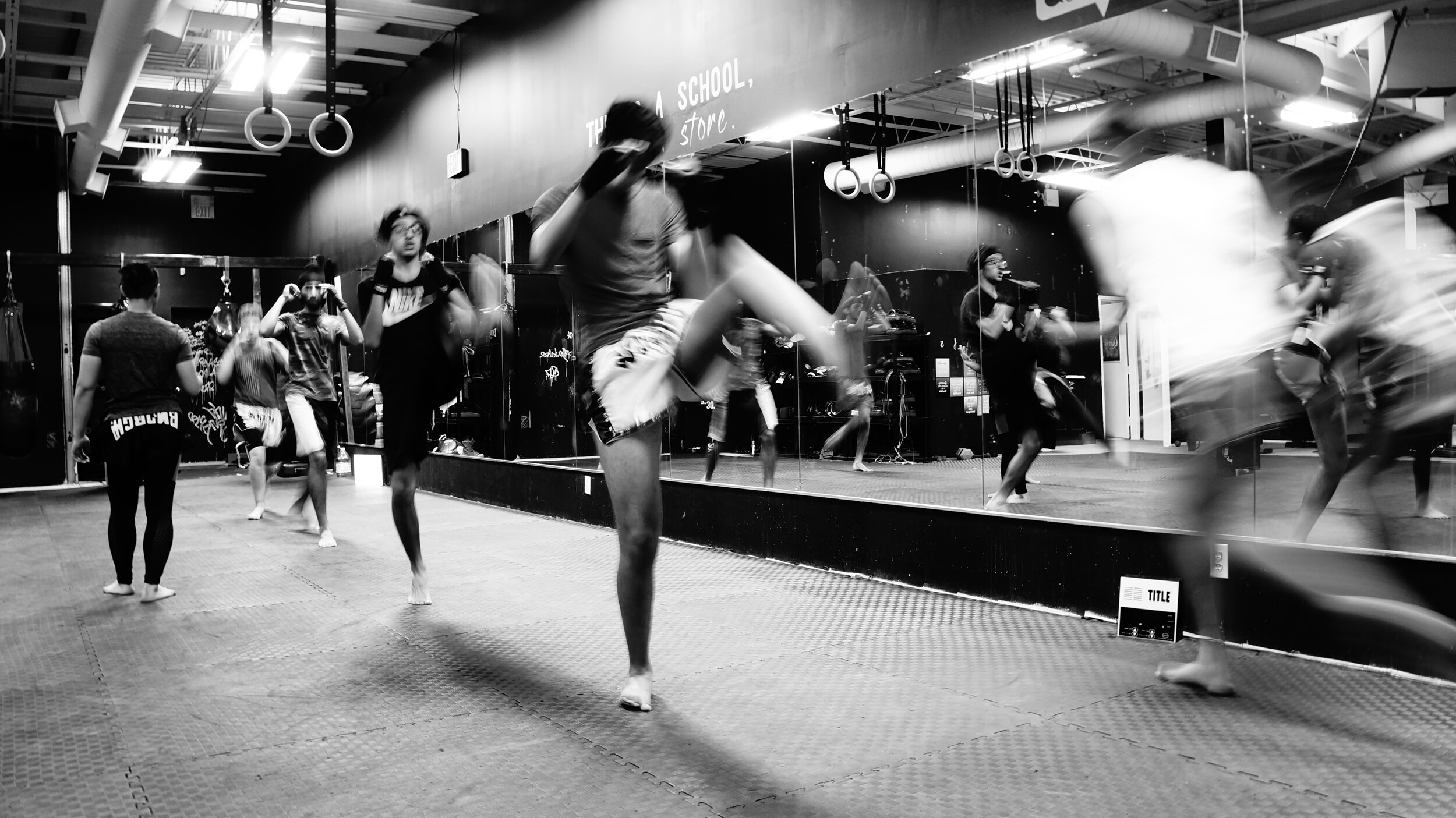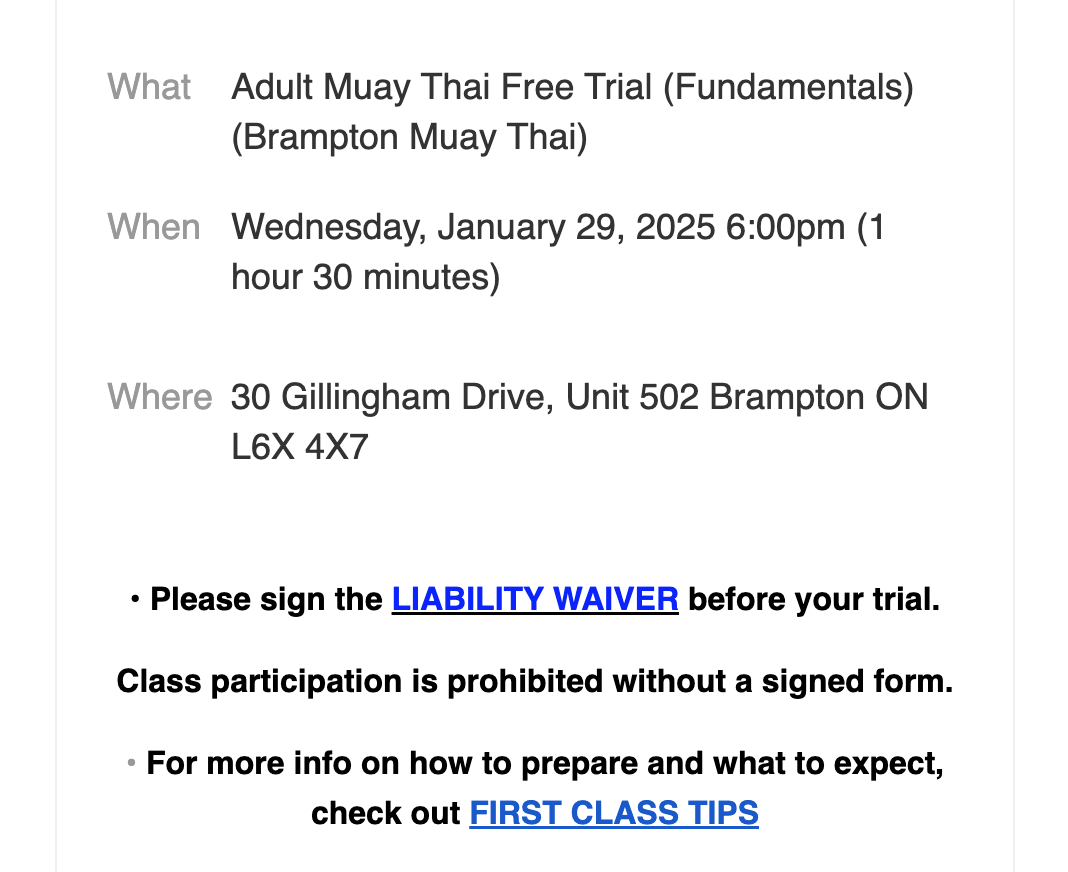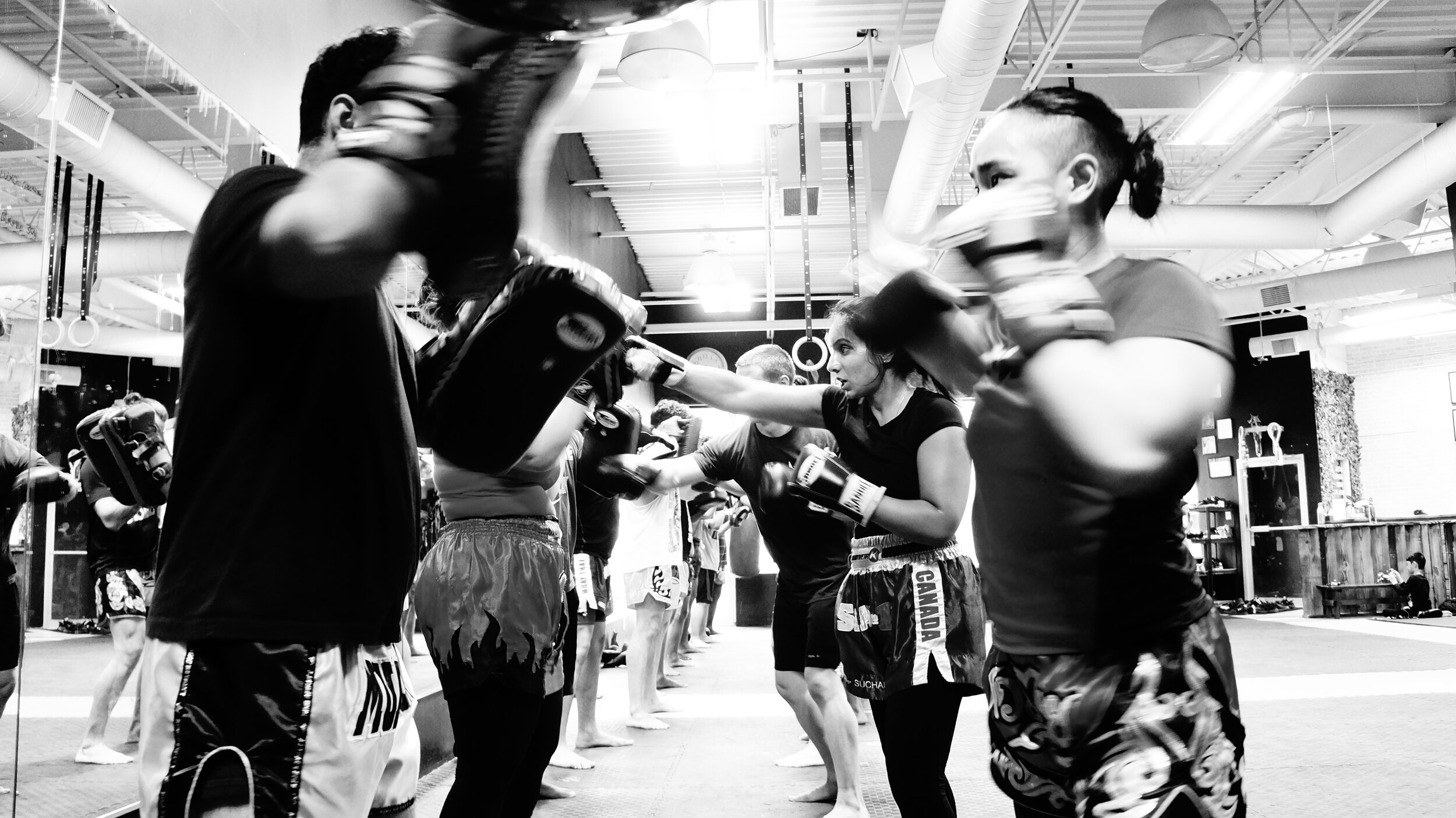Key Moments with a Trial
I. Before the Class
For many beginners, this may be their first time training in martial arts, or it could have been a long time since they last trained. Being in a new environment, unfamiliar with anyone, and trying a new sport can be intimidating. As instructors, it is our responsibility to establish trust even before the class begins.
-
When you see a new student, always greet them with a smile and introduce yourself. It's important to make people feel like you are there to help them-- a friendly greeting goes a long way.
"Hi, are you here for your Muay Thai trial? Nice to meet you [introduce yourself] I’m here to help you out. The head instructor, Kru Kat, will be here soon. In the meantime, you can place your jacket and bag on the shelves. You can keep your shoes on as I give you a tour of our space before we start the class."
-
Before every class, you will be informed if a student's waiver hasn't been signed, if it already has been, carry out the tour. If the waiver hasn't been signed, make sure it's completed before giving them a tour and letting them train:
"You can go on your e-mail and on your free trial confirmation, there is a tab that says ‘Sign Liability Waiver.’ Once it's done, just show me the completed form and I can give you a tour of the space before we start."
As the trial reads/signs the waiver give them space instead of hovering over them but keep them within your peripheral so you can see once they're done.
Check the screenshots below to see the appointment reminder with the waiver link (1) and waiver confirmation (2), with the second screenshot confirming that a copy of their completed form has been sent.
-
Invite the trial to walk with you from the gym floor to the clinic (or vice versa if they’ve entered in from the clinic side). It's important that trials know what we have to offer beyond the class so we can support the clinic. This also gives them a chance to think about something other than training.
"Our space consists of two parts: a gym and a clinic. The clinic here offers chiropractic, massage and stretch therapy services. And over here is the washroom and changeroom. Just a note that since we train barefoot on the mats, it's important you wear your shoes/slides anytime you're on this floor to make sure we're keeping our space clean and hygienic."
Lead them back to the gym side after showing them the clinic space and this is where you can get into more about the class.
"Before we jump in, what made you want to try Muay Thai?“
Depending on how they answer, find a way to bridge it to what to expect in class.
(continued) "Our class consists of two parts: the first half is going to focus on strength and conditioning while the second half focuses on striking. Parts of the class may feel challenging and that's okay.
If you feel you need to take a breather, slow things down or take a sip of water that's cool. If you have any questions, just let me or Kru Kat know and we'll help you out. "
1. Appointment Email with waiver link
2. Completed waiver form confirmation
II. During Class
As the head instructor leads the class, your job as the assistant instructor is to be the main support for the trial. If participants seem hesitant, suggest they watch first before joining. If parents of teen trials are present, remind them that their child can choose to watch. Let them decide to join when they feel comfortable.
-
IDENTITY: Patient and supportive training partner
OUTCOME: The trial feels cared for and supported as they navigate a challenging workout. During moments of extreme difficulty, give words of encouragement to continue or take a break if needed. What’s important is that trials feel they have a choice to train on their own terms and not try to “catch up” to the rest of the class.
WHERE TO BE: Train in the back row near the middle facing the mirror so you and the trial can see each other and the head instructor.
-
IDENTITY: Patient and supportive training partner
OUTCOME: The end of the workout may be a lot for the trial. Make it clear they are welcome to take a breather if needed (e.g., sit out for a while, use the washroom).
Reference the energy scale from 0-10 (e.g., 0-4: low energy, 5-7: medium energy, 8-10: high energy) and based on the number they give, provide an option. Trials feeling anything from 0-4 have low energy and should sit out to recuperate, 5-7 can continue to train but let them know the moment they feel lower than 4 they can sit out while 8-10 can keep training.
As the rest of the students wraps their hands, if the student has enough energy to talk and listen, explain to them the next part of class.
-
IDENTITY: Patient and supportive teacher/padholder
OUTCOME: Provide the student with a sufficient sample of the fundamentals while celebrating their efforts with the new skills. Set the expectations low—most will not get things perfect the first time let alone in their first class. Focus only on correcting one thing at a time while celebrating their accomplishments more (e.g., 3 compliments:1 correction ratio).
WHERE TO BE: Train by the mirror in the front row near the window-side.
During the intro to the stances, “mirror” the technique in front of them for the first few reps and gradually move to the side to give them room to focus on the technique without you directly in front of them.
III. After Class
Once the class finishes, thank them for coming in for their trial and let them know they can ask for more info if they’d like to learn more.
-
Oftentimes after an exhausting (and intimidating) experience, a trial may shut themselves off. When a student does not look engaged, they are most likely to stay silent or try to leave without acknowledgement. Regardless, make an effort to end on a positive note by briefly giving the next steps and a warm sendoff.
“Thank you for joining us for your trial! It’s okay if you don’t have any questions for now, you’ll receive an email soon for next steps if you’d like to learn more. Take care, and have a good rest of the week!”
This is a school, not a store. Don’t try to “sell” to a student that this is the right place for them. There can be many reasons why a student may not express enthusiasm (e.g., personality, program cost, scheduling conflict, prefers other sports, intense training flares an old injury). And that’s okay :) Part of teaching is students who will only be with you for the day, and that is still valuable experience.
-
Usually if a student is eager to continue, they will immediately ask questions. Find a space where you and the trial can talk privately without interruptions (avoid the mats during post-class clean up, and find the hallway where there is less traffic) so you can provide next steps. Try to keep the conversation brief while hitting key details (e.g. schedule, tuition, gear and contact)
“Thank you for joining us! If you’d like to continue our classes are on (insert schedule), with the membership options and training gear listed on the website (show page). And don’t worry about memorizing, all the details will be emailed to you and if you have any more questions, you can always email Kru Kat.”
Even if you have been an excellent training partner and instructor, there is always a chance that the student may choose not to continue. What matters most is that you have presented yourself as competent and welcoming.
People won't remember what you said or did, they will remember how you made them feel.
- Maya Angelou






